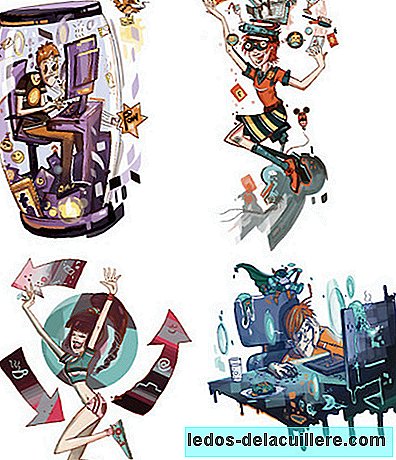
The Spanish association Protégeles, belongs as you may know to the Safer Internet Program (of the European Commission). I just found this recent study in which Protégeles, and other entities from different European countries have participated. This is a research project: the EU NET ADB, which aims to publicize the risks of Addictive Internet Behavior (CAI) among European adolescents.
The study is funded by the Safer Internet Program, which has a biannual periodicity, and promotes the safe use of the Internet and new technologies
A representative sample of more than 13,000 adolescents between 14 and 17 years old, residing in seven European countries, has been surveyed. In addition, 124 qualitative interviews have been conducted, with questions about Internet access and its use. Too they were asked about their positive experiences, and those that are potentially risky. These interviews aimed to discover the development process of the IAC, as well as the potential risk and protection factors.
What is an Addictive Internet Behavior?
Rescuing a fragment of the interview that we did a while ago to Clara Marco, we found that criteria to determine Internet addiction (or to mobile phones, video games), are: “using the Internet more and more, feeling bad when it cannot be used, having problems or discussions with family members due to its excessive use, using it too much and causing interference with studies or family relationships, losing control, having difficulties to stop using it… ”
In the study I am talking about today, they define the IAC as “A pattern of behavior characterized by the loss of control over the use of the Internet. This behavior potentially leads to the isolation and neglect of social relationships, academic activities, recreational activities, health and personal hygiene ”.
In the process of addiction, and before reaching it, you can observe a Disocial Behavior on the Internet (CDI) and a risk of addiction
Results of the study
Although I link it to you in case you are interested in knowing it better, I have highlighted some things that I find interesting. For example, within the quantitative component, it has been found that 1.2% of the sample has IAC, while 12.7 percent are at risk of acquiring this type of behavior.
Gambling with online gambling, the use of social networks and computer games are closely related to Dysfunctional Internet Behavior (CDI), while watching videos / movies was not related to CDI, and doing homework / searching for Information is negatively associated with CDI. Which indicates that the more teenagers use the Internet to do their homework / information search, the less signs of CDI they show
What do teenagers use the Internet for? more than 90% are members of a Social Network, and almost 40 percent spend at least two hours in Social Networks on a normal school day - attention because being more than two hours a day in the Networks (RRSS) is associated with CDI, as well as having more than 500 friends online -.
Internet: not only social networks
Teenagers who bet (almost 6 percent of the sample) have three times the risk of manifesting CDI. And as for computer games, those who use them have a twice as high risk of manifesting CDI (one would expect that it would have been specified with what intensity this practice is associated with a risk). It seems like that there are more girls than boys who prefer the USSR, with the games it happens that the boys are the most likely to abuse or have addiction to the game.
Internet (used improperly) involves other risks
It is amazing and worrisome that 63% of the sample contact strangers through the network, and of them, 45.7 percent had been face to face with someone with whom they had previously only contacted online. Boys and girls are thus exposed to Grooming and sexual images; as well as bullying.
Qualitative component of the study
The need to have knowledge and experiences (something typical of age), together with adolescent curiosity, motivate the attraction of teenagers on the Internet. They also get fast and current information, and have fun; so from these points of view the relationship they maintain is understood.
Curious is knowing that some teenagers need to feel strengthened, and this comes with positive situations such as being valued, having more skill playing, occupying free time ...
Having few offline skills increases vulnerability in the development of CDI
Strategies adopted by teenagers
Depending on the experience itself, adaptive strategies are developed that allow them to handle the phenomenon of “always being connected”. Thus they try the self control, priority tasks, explore offline alternatives. But they also acquire others that are not adaptive at all: parental controls are skipped, normalized and even legitimate the use of the Internet.
The study should help us understand the relationship established by minors with the Internet, to realize their low perception of risk (and therefore the need for supervision); and also to enhance the benefits of the network, minimizing the risks. It is everyone's job, also of children who must gradually acquire self-control, but it is precisely that the search for immediate pleasure is a characteristic inherent to childhood (it is evolutionary), and maturation in this sense does not begin to occur until 15/16.












